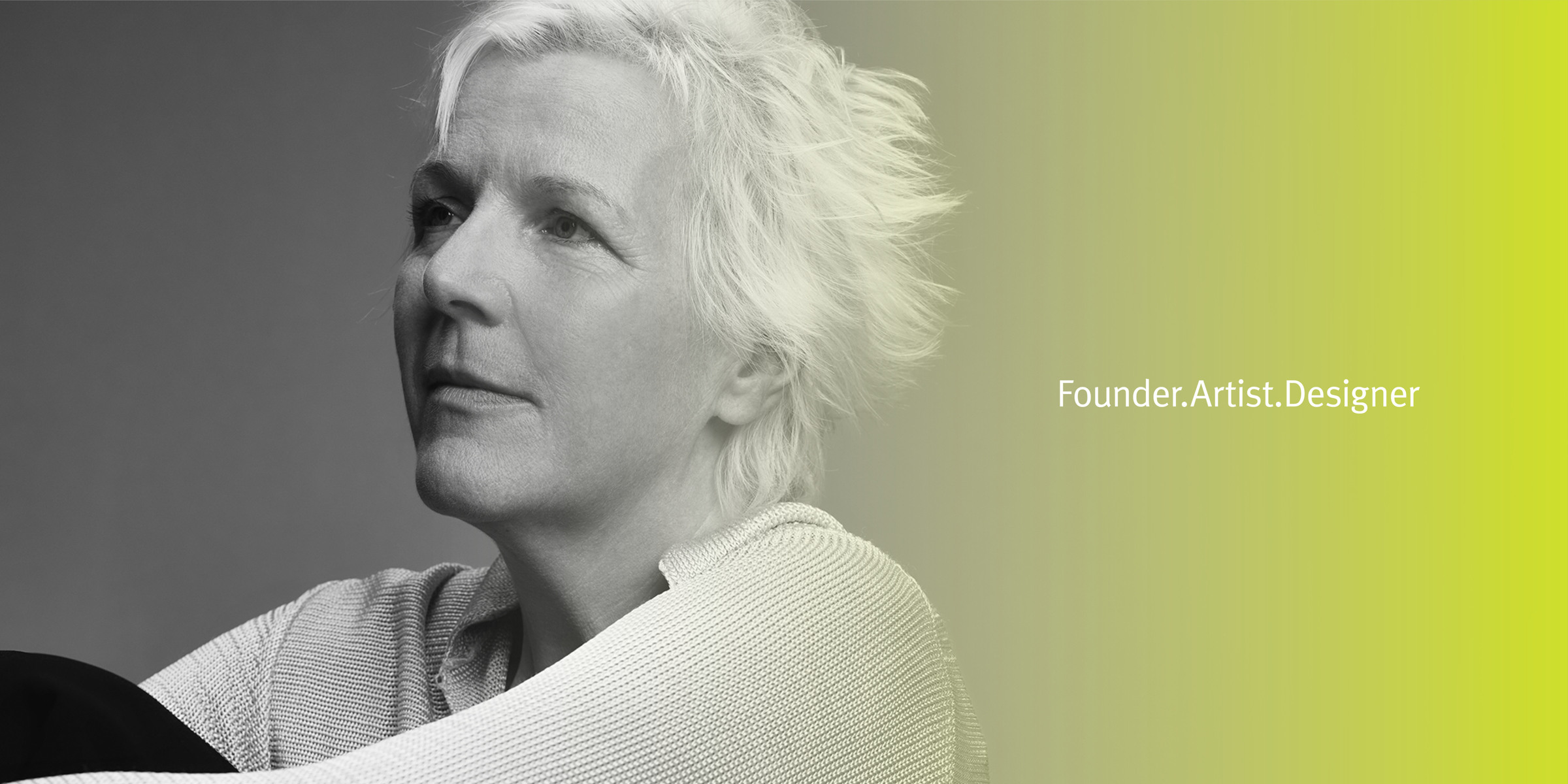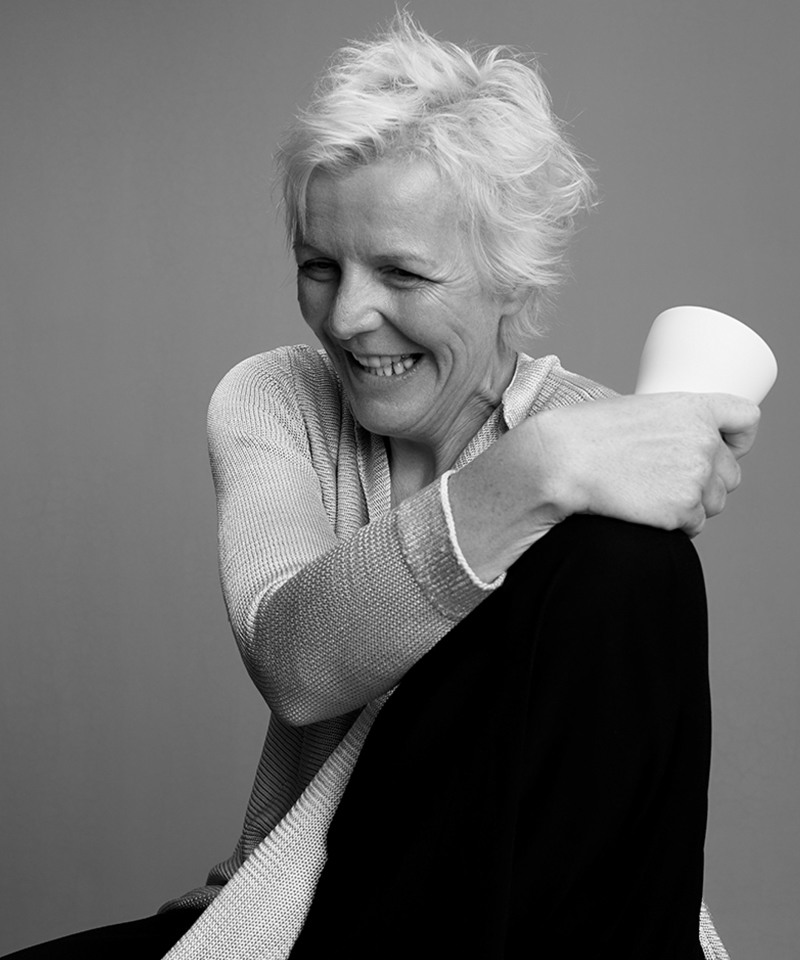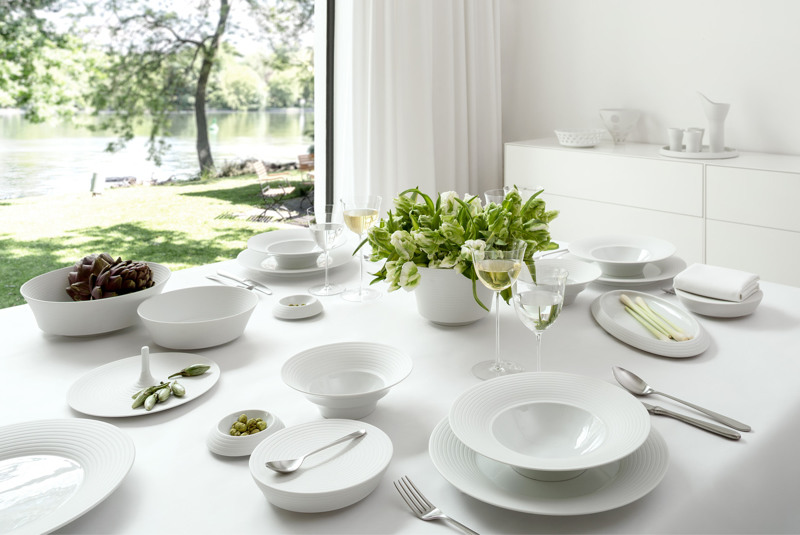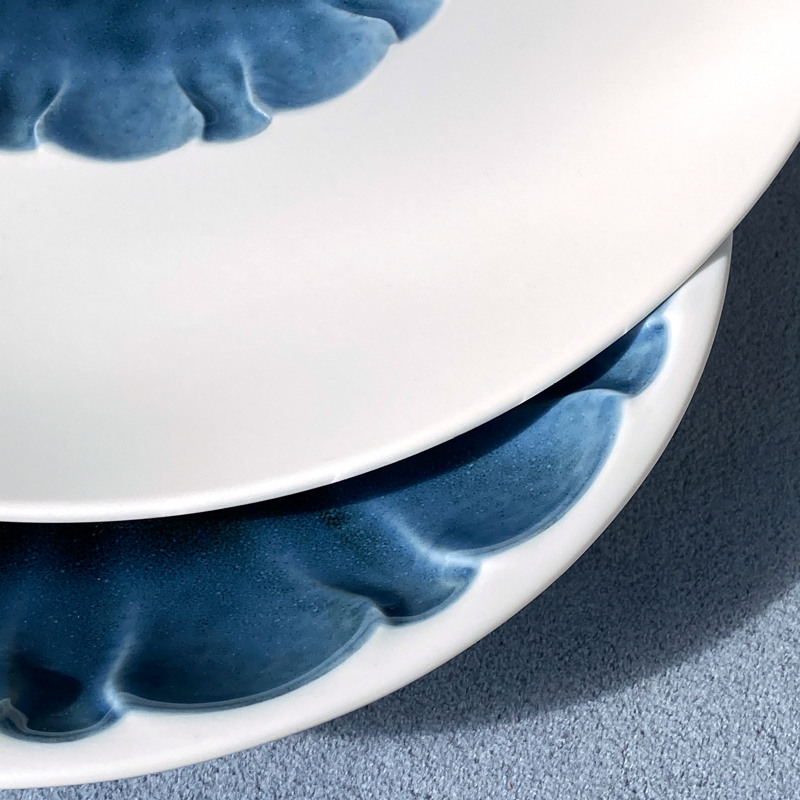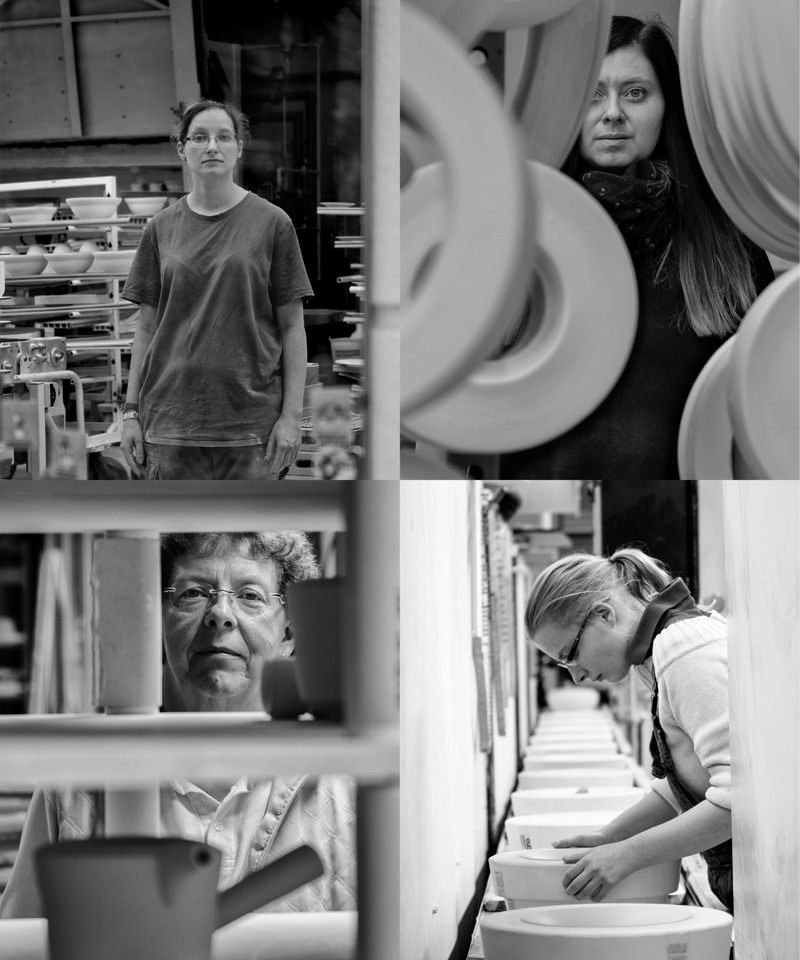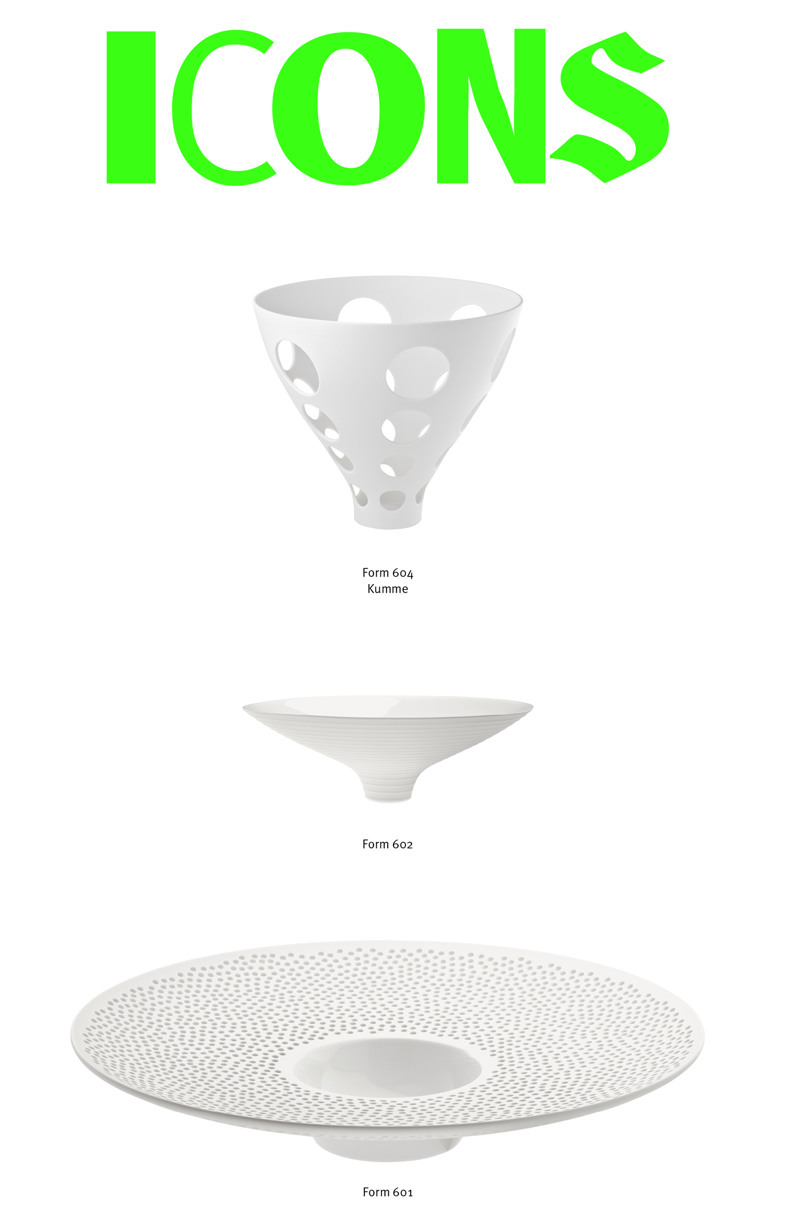
Introduction to the World of Handcrafted Wine Glasses
In the following, we turn our attention to the new wine glasses of the Domain collection: Based on designs from 2009, Stefanie Hering has created a series of handcrafted stemware, developed in collaboration with the renowned glass manufacturer Kvetna in the Czech Republic.
Read more →
Interview by Italian journalist Roberta del Vaglio with Stefanie Hering Spring 2021
First publication in MOHD Magazine and La Casa in Ordine
What drives Stefanie Hering? What opportunities, but also challenges, does she see in the future of product design? In an interview with the Italian journalist Roberta del Vaglio, the designer explains her philosophy, describes her focus in working with porcelain as a material and also has recommendations for young designers.
Roberta del Vaglio: How did you come to porcelain and why did you then devote yourself to tableware?
Stefanie Hering: My passion for porcelain stems partly from my childhood. Eating together was a central part and important moment of family life. It was clear to me early on that the food and the tableware that goes on the table deserves an appropriate stage. And I wanted to build this stage. As a designer, I now know exactly what my style is, what I want to give to the world - and as a master ceramist, I know how to implement it in my creations. The further development of table culture with surprising new forms and possibilities is my approach.
RdV: How has the table changed in recent years? What disappeared and what was added?
SH: A very important topic for me, which has changed rapidly in recent years and is gaining momentum especially in the current period, is the topic of sustainability - this goes hand in hand with the social rediscovery of manufactory work and the increasingly high appreciation of craftsmanship, no matter in which area. A very positive and equally overdue development! What we do in my manufactory, Hering Berlin, fits the times and the future. Porcelain craftsmanship and training in Germany are still of very high quality today. I would like to carry this tradition into the 21st century: because of the handcrafted production, every single piece is unique, which delights again and again and accompanies us for a lifetime. In every object from Hering Berlin there is a knowledge that has been passed down through generations - and an attention to detail that is only possible in a purely handcrafted production. Small deviations from the norm are more of a distinction than a flaw here. They are a sign of the trace of the hand. That’s what I call Mindful Luxury!
RdV: What are the elements that should not be missing even on the everyday table?
SH: The moments of being together at the table have become precious. That’s why I think it’s especially important to indulge yourself when setting the dining table and perhaps even establish new rituals at home, whether it’s a small brunch, a five o’clock tea or a beautifully staged dinner. To do this, I recommend arranging the table a little more densely and structuring the centre of the table with porcelain or cast iron centrepieces, candles and flowers. My motto is: you can be opulent with tableware and décor at the table. I also advise creating an architecture at the table. That means playing with different heights of plates, vessels and objects.
RdV: Is there a new project you would like to share with us?
SH: I would like to push the boundaries of what has been possible with porcelain so far. This is of course where my expertise as a master ceramist comes in handy, because I know exactly how to work with porcelain as a material, how to push new processes and thus visionary developments. Size is an issue, so are structures and glazes. Both the size and the glazes of porcelain objects set clear limits for industrial companies. With my purely artisanal manufactory, I can act in a completely different way. I experiment! In this respect, we are the germ cells for porcelain innovation. One example is the Blue Silent colour glaze: the central feature is a glaze based on earths and minerals that is poured onto the sideboard surface, while the rim remains in that pure, unglazed and velvety bisque porcelain that is typical of Hering Berlin porcelains. The only thing is that porcelain does not normally allow such glazes because they cannot withstand the high firing temperatures. So I tested for so long in our manufactory, tried out with clay, with earths, which we process in such a way that they are highly fireproof, that they form a symbiosis with the glazes. In the field of glazes, there will also be new colours from me in 2021 that do not yet exist anywhere.
RdV: What does it mean to be a woman in the design industry and what would you recommend to young women entering this world?
SH: My recommendation for young women designers is: A strong idea. A bold vision. Absolute consistency. And resilience along the way. What every woman especially needs in the creative field is also allies. There are still far too few influential women’s networks among female designers. This is also due to the young history of women in design practice. Take Germany: with few exceptions, women had no access to art academies in Germany in the early 20th century; they could only take private lessons. When Walter Gropius opened the Bauhaus in Weimar in 1919, he stated: “Any person whose talent is deemed sufficient will be accepted as an apprentice, regardless of gender.” Thus the foundation stone was laid for the equal artistic craft training of women, especially in my own field - the production of ceramics and porcelain. It is only in the last few decades that the artistic development of women in Europe has continued to emancipate itself. It takes a strong inner conviction and unassailable resilience to follow this path. That’s what I mean by resilience.
RdV: Are there many women in your team?
SH: Around 60 per cent. In the manufacturing area. In sales and marketing. In the sales area. I support design companies that deliberately aim for a 100% quota of women. For myself, however, I have decided to base the composition of my team exclusively on talent, knowledge and experience. I personally find this very authentic and natural. My fantastic team shows me every day that it works.
RdV: What is the significance of the Icons project?
SH: The ICONS are milestones in the collections of Hering Berlin and on my own path as a designer. They are testimony to my constructive engagement with porcelain as a material, which has been going on for years. The icons I have selected here have long been regarded and named by collectors and design institutions as icons in contemporary porcelain culture. That is why I now take this name with honour for these pieces - which, by the way, have also won international design awards.
RdV: Can you tell us more about the pieces included in Icons?
SH: Icons strips off the corset of a form bound to its function. Three examples: For the Kumme I developed in 1992, Form 604, I first developed the basic form - a form that is so sharp it cracks - and then looked: What does this shape create? How far can I go in inscribing structures into it before it loses its sharpness? The monolithic shells of Form 602, on the other hand, reflect my experiments with the balance of a form: How far can the opening project in relation to the base before the object loses its stability, but never its clear line? A small masterpiece among the Form 601 bowls is an example from the “Cielo” perforated pattern collection: Here, the finest holes are punched into the wide rim of the bowl with a hand drill. They not only create a sophisticated play of light and shade, but also test the stability of the material to its absolute limits.
RdV: What could you start a ceramic collection with?
SH: Always start with your favourite pieces. This is an intuitive choice that is usually spot on. As with art. Don’t collect according to supposed monetary value, but carefully select exactly those pieces that I want to surround myself with, that I want to actively live with in everyday life, that I like to look at, feel and enjoy again and again. For me personally, these are clearly pieces made of bisque porcelain - my speciality.
RdV: Is there a designer from the past that you feel inspired by?
SH: Ludwig Mies van der Rohe once said: “The material is beautiful - we should show it”. This is also my personal postulate when I design - and thus my sympathy for the designer and architect Mies van der Rohe. Because: the perfection of form lies in concentrating on the essence. No matter what material we designers work with, my very firm opinion is that you leave the material room to breathe and to develop. I don’t impose a shape on porcelain, but emphasise its beauty in an organically grown design. To do this, however, you have to know your material very well. You can see this quality in all the designs, which rightly fascinate us the most: They radiate a lightness, naturalness and beauty of form that lives from the material and its high aesthetics.





